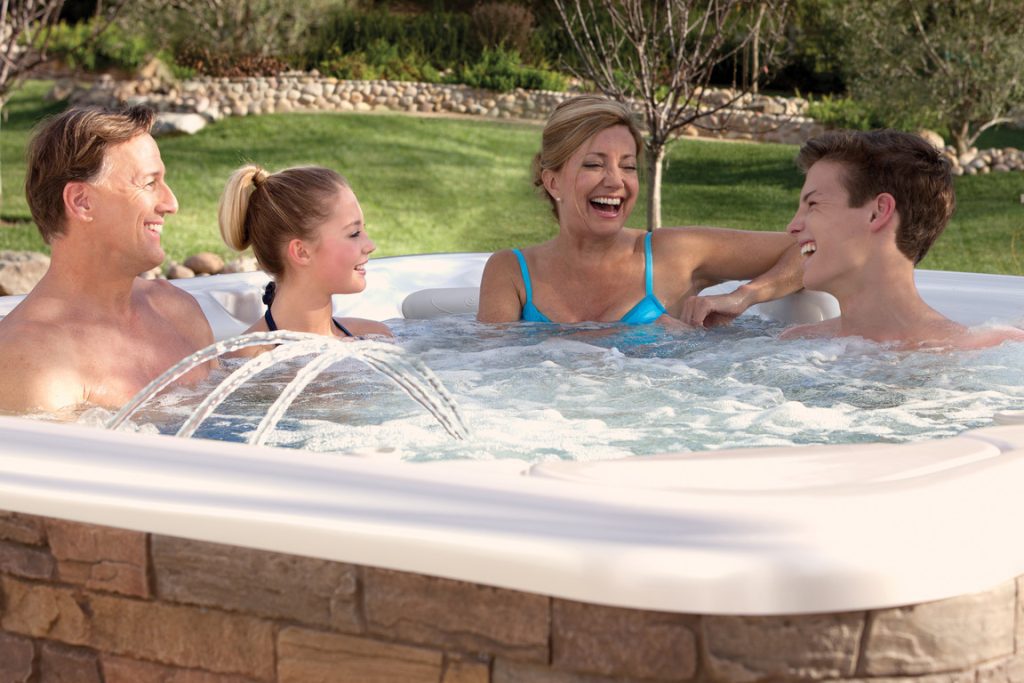A high-quality hot tub cover keeps heat in, saving energy costs. It also prevents evaporation that leads to waste and keeps out debris, including leaves and seeds.
Over time, however, your cover may begin to wear down. Some signs of this are warping, loose seals and a waterlogged foam core.
Warping
A hot tub cover serves more than just an aesthetic purpose. It helps to keep heat in and reduce your energy bill, it keeps out leaves, bugs and debris that would otherwise enter your hot tub, and it prevents evaporation and water loss that could require costly refills. Inspecting the cover regularly and performing routine maintenance is essential to preserving its condition and functionality, but even well-maintained covers will eventually need replacing.
One clear sign that your cover is overdue for replacement is warping. This occurs when the foam inserts on your cover start to separate from each other, creating gaps in the insulation that allow heat to escape. A warped cover will also lose its insulating properties, leading to higher energy bills and the need for more frequent fills of your hot tub.
A quick test to see if your cover is starting to warp is to run your finger along the perimeter of the cover, especially around the seat back corners. This is where the cover tends to crease, and can indicate that your vinyl is starting to wear down.
If your hot tub cover starts to warp, you’ll want to replace it as soon as possible to ensure optimal performance. You can find covers that fit most hot tubs, but for best results, choose a cover that is specifically designed to fit your model of spa.
To keep your new cover in the best shape, inspect it regularly for damage, stains or odors that may be a sign of early wear and tear. You should also perform routine maintenance, including cleaning and conditioning the vinyl to help preserve its durability.
If your cover is proving difficult to lift, you can invest in a shelf cover lifter, which makes the process of opening, closing and stowing your cover less strenuous. The most helpful option is a hydraulic cover lifter, which uses pistons incorporated into the arms of the lifter to carry the weight of your hot tub cover for you. It is pricier than other options, but it doesn’t require any installation or plumbing and only requires about 10 to 12 inches of clearance behind your spa.
Loose Seals
A hot tub cover with a loose seal will not only look bad, but it will also allow unwanted dirt and debris to get into your hot tub. Often, the cause of loose seals is a simple repair, but it’s essential to fix it as soon as you notice it. Loose seals aren’t just unsightly, but they will slowly erode and lose effectiveness over time. To prevent this, regularly check the seams of your hot tub cover to make sure they’re tight.
Heat loss is another issue that can be caused by a loose hot tub cover. A loose hemming allows outside air and wind to enter your hot tub, increasing operating costs and energy usage. The AccuLok cover from PDC Spas is designed to solve this issue by using a revolutionary heat-trapping design that saves energy while still being lightweight and easy to use.
Another common problem that can be found in Hot Tub Covers is cracks or leaks in the shell itself. This is usually the result of the hot tub being out of level, which can cause stress fractures in the shell as water weight isn’t evenly distributed. A simple fix is to re-level the tub, which will prevent this from happening again in the future.
A crack or hole in your hot tub cover can also allow for heat and steam to escape, which will again increase operating costs. To repair this, you’ll need to apply a spa sealant to the area that is leaking or cracking. This is an important step to take, because if left untreated, these cracks will spread and eventually lead to a complete tear of the cover. A popular product is Flex Seal, which works well for hot tub shells. It goes on clear and matches any color of your cover, making it an ideal solution. Another good option is a foam patch, which is easier to apply and can be painted over to match the color of your cover. A hose or garden nozzle can spray the patch, which is then allowed to dry before you use your cover again.
Mildew Smell
A musty, earthy smell is a telltale sign of mildew or mold and it’s often accompanied by a foul taste. Both forms of fungus thrive in moist, dark environments and they release spores that quickly permeate fabrics when they’re left in such conditions. The odor resembles the earthy, musty scent of rotten wood or fermenting alcohol and it can also be sour and tangy.
Mold and mildew are typically found in basements, bathrooms and laundry rooms where damp clothing and towels are left for long periods of time. If these spores get into your hot tub cover, they can cause the foam core to deteriorate and rot. The resulting waterlogged and spongy foam will release the musty odor that we all know and love to hate.
The best way to prevent a musty smell in your hot tub or swim spa is to maintain your cover regularly and keep it clean. Remove the cover and wash it thoroughly with a non-foaming, ph neutral cleaner every 1 to 3 months. Avoid cleaners that contain bleach, silicone or other harmful chemicals as these can damage the vinyl surface. If the cover is in poor condition, rub it down with a waterproof vinyl protectant that will seal its pores and restore its moisture resistance.
Another tip is to regularly inspect the tie-down straps, locks and hinges of your cover for signs of damage or wear. Loose and damaged hinges will allow heat to escape, making it harder to keep the water warm. Tighten the straps, replace any worn parts and repair any torn hinges to ensure a tight seal.
Mold and mildew also thrive on humidity, so be sure to keep your home well ventilated. Use a dehumidifier in the summer to keep moisture levels low and in the winter make sure to run that bathroom fan after each shower and use your washer’s dryer vent to suck excess moisture out of the air.
Waterlogged Foam Core
Hot tub covers work hard to keep warmth and water in, while keeping dirt, debris, leaves and snow out. It’s important to give your cover the love and care it needs to help prolong its lifespan and keep it working properly. A good cleaning schedule of every 1-3 months, and rejuvenation of older covers, will help your cover last for years and look great.
A hot tub cover becomes waterlogged when stagnant rain and condensation soak into the foam core over time. This can cause a heavy mildew smell that’s not easy to get rid of. A waterlogged foam core will also not insulate as well, causing your energy bill to skyrocket.
The best way to prevent a foam core from becoming soaked and waterlogged is to check for small holes in the vinyl cover’s waterproof seal on a regular basis. If a hole is found, it should be drained as soon as possible to avoid water accumulation. You can do this by cutting a slit into the plastic sheeting near the corner and letting the water flow out. This is best done outside so you don’t get your pool or hot tub water wet.
Other things that can contribute to a wet and dingy hot tub cover include over-chlorination, excessive ozone exposure or imbalanced water chemistry that results in foam puffiness, stitch disintegration, and bleaching of the underside of the vinyl. Avoid these problems by testing & balancing your water weekly, limiting ozone exposure and avoiding over-chlorination.
Shelf lifters take some of the weight off of the cover by attaching to the edge of the cover, making it easier to remove and stow away. It can be a useful tool, especially if you don’t want to (or can’t) lift the cover by yourself, but it shouldn’t be used as an excuse for not maintaining your cover or performing annual inspections.
If you are looking to save money on a hot tub cover lifter, try building your own using electrical metal tubing (EMT) conduit, elbows or a bender, conduit straps and a hacksaw. You can find plenty of DIY plans on the internet, but make sure you use EMT conduit, as PVC may weaken and warp in sunlight over time.


